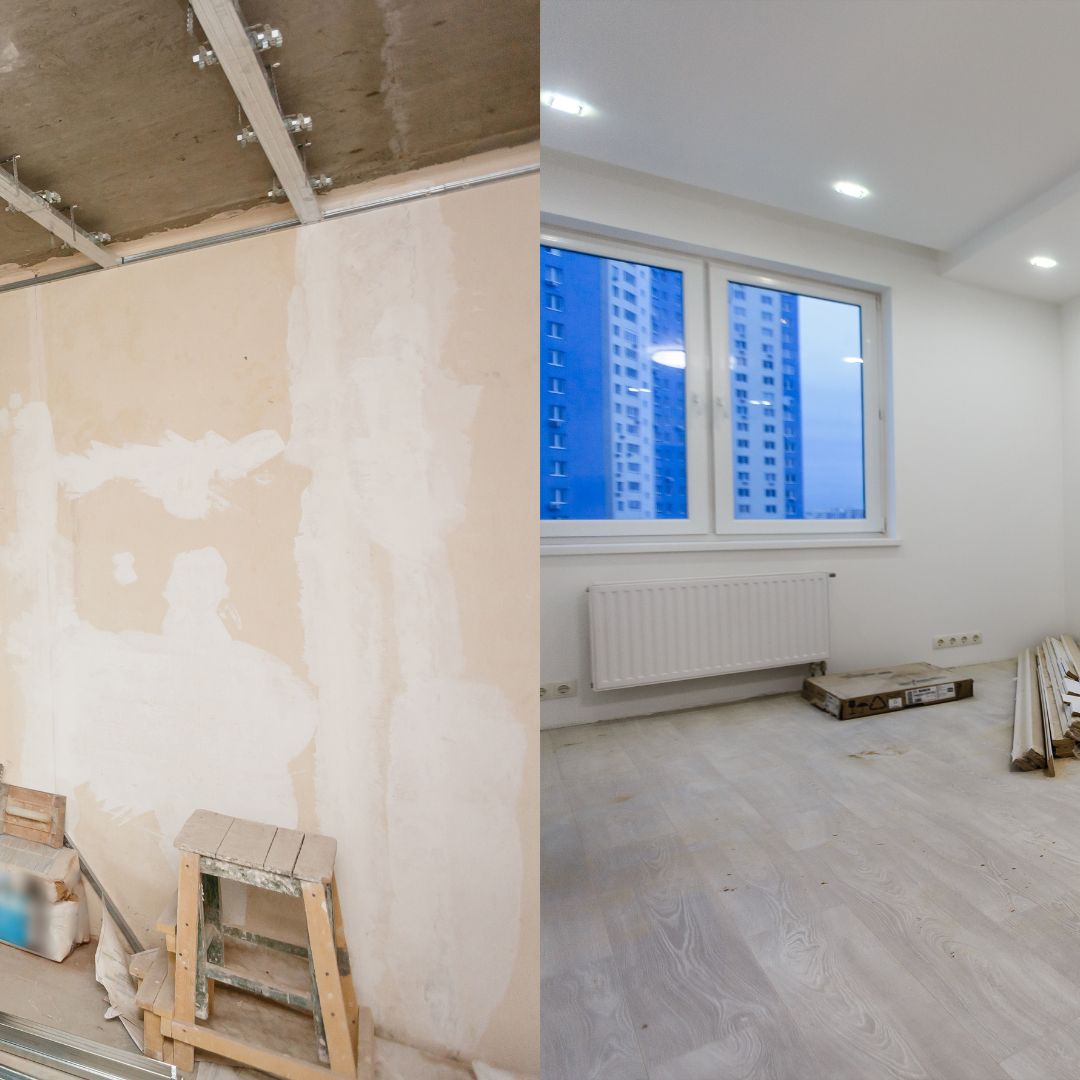Buying a brand-new or recently renovated home gives the impression that you won’t have any problems. But these seemingly pristine houses can lull you into a false sense of security if the work isn’t done correctly. Therefore, if you’re house hunting, know what signs potentially indicate sub-par renovations.
Keep An Eye Out For These 10 Renovation Red Flags
Some signs of bad renovations are more obvious than others (misaligned cabinets, sticky doors, and messy paint jobs). But sometimes, what you see at first (or even third) glance looks perfectly fine, making you assume everything is up-to-code and done correctly.
If a band of anxious house flippers only want to make a quick buck, they likely will take shortcuts and use questionable practices and cheap materials. Sometimes, a contractor on a tight schedule may clip a few corners to speed up the process.
These are a couple of reasons why you always want to find a reputable contractor when you have to do work on your home. But all that aside, what would you do if you had no insight or input in the renovation process?
You’re simply looking at potential new homes that appear to be in great condition. What should you look for to ensure you’re getting the quality work you expect? Or better yet, what things are likely tip-offs that the home isn’t in the perfect shape you think it is?
Take a closer look at these renovation red flags that are likely indicators you’re dealing with shoddy work.
- Sloppy Paint Job
A messy paint job is a big red flag because it’s typically one of the easiest DIY projects. If you notice paint drips, patches, uneven lines, and other issues, these are all signs of a rushed job. If they didn’t take their time to paint, what else did they rush?
- Poor Tiling
Loose tiles, grout or mortar stains, uneven grout lines, or crooked tiles are signs of a bad tiling job. It comes down to tile layers that were rushing, not paying attention, didn’t care, had no experience, or all of the above. Sloppy tile work can show up in tub or shower surrounds, tile floors, walls, or backsplashes.
- Signs of Water Damage
If you spot any signs of water damage like stains on walls or ceilings, buckling paint, or drippy pipes, beware. If flippers decided to put a band-aid on a leak or simply cover up damage instead of repairing it, you could be in for even more surprises.
- Awkward Space Planning
Something that isn’t always evident during an initial walkthrough of a home is poor space planning. But this is why it’s good practice to see a home a few times before deciding to buy. Try to open drawers, cabinets, and appliances at the same time.
Get a feel for how the layout of the home and individual spaces work. Is the flow fee off, or you can’t open a cabinet when the dishwasher is open? These problems show that the contractor didn’t pay attention to details or perhaps was not very experienced.
- Electrical Problems
Blinking lights, weirdly placed light switches or outlets, and exposed wires all point to subpar electrical work. Likely, someone other than a licensed electrician did the work to save some money. This isn’t just frustrating, but it poses a major safety risk.
- Issues with Plumbing
Look for low water pressure, drippy faucets, leaky pipes, hard-to-turn faucet taps, and anything that doesn’t make sense. All of these things in a new or recently renovated home indicate inexperienced or rushed plumbing work.
- Hot or Cold Spots
As you walk through a home, pay attention to the temperature. Do certain spots feel colder or hotter than others? This could be a sign of low or no insulation or venting issues.
- Doors and Windows That Stick or Don’t Stay Open
When you’re house hunting, you need to try things out in the home, just like test-driving a car. Turn on water and lights, look inside cabinets and drawers, and open windows and doors.
Look for doors that don’t stay open on their own or windows or doors that stick or won’t close all the way. As homes settle over time, it can lead to these issues. But if you’re noticing them in a new home, it could be due to improper installation or bad materials.
- No Permits
If the sellers or builder can’t present any permits, don’t proceed any further. If they didn’t pull permits before doing the work, what are they trying to hide? At the very least, they’re cutting corners by bypassing the permit process, making it likely they took shortcuts elsewhere.
- Cheap Fixtures and Finishes
If the main goal of a renovation is to make a quick flip, then the house flipper’s main goal is to make money. Even if they somewhat pay attention to the quality of work, they might try to put more money in their pocket by opting for cheap materials. If you see low-quality finishes and fixtures, it’s a good possibility they skimped on building materials as well.
What If a House Has Bad Renovations?
Do all of these things instantly mean you’re dealing with a horrible renovation? Not exactly, but they’re certainly worth further investigation. However, if you notice multiple issues on this list, it’s a good bet the contractor rushed the renovation.
In this case, there are most likely even more things lingering and lurking below the surface, in places you can’t see. It’s always a good idea to get a home inspection, but even house inspectors only usually work with the visible. Inspectors don’t normally look inside walls, or remove paneling, etc.
They alert you to questionable items and advise you to get more detailed, specialized inspections. So what do you do if your gut tells you the house you’re looking at is a victim of poor renovations? Well, you can stick it out and get ready for a lot of expensive hassles. But your wisest course of action might be to keep looking.

 Facebook
Facebook
 X
X
 Pinterest
Pinterest
 Copy Link
Copy Link






